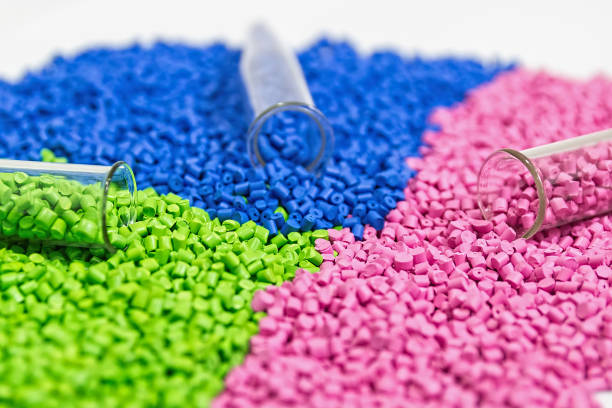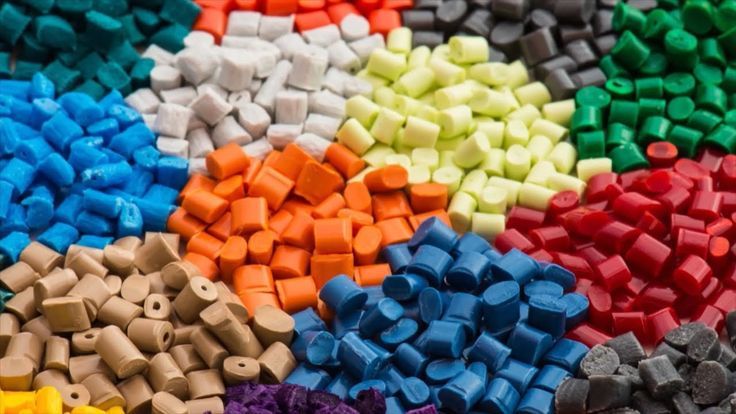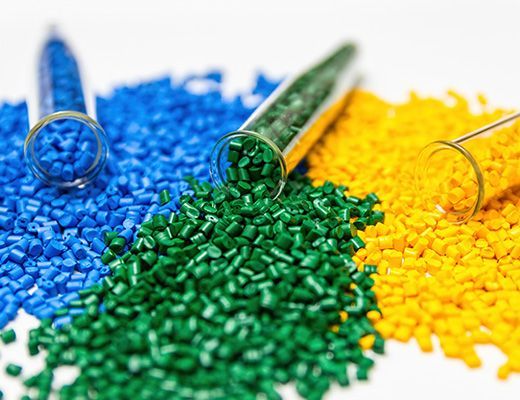In the plastic industry, the use of masterbatch is an effective method to improve the properties of polymer products. Masterbatches, with their special compositions, add features such as color, thermal stability, UV resistance, and many other properties to polymers. In this article, we will examine masterbatch and its types and also discuss the benefits of using it.
What is masterbatch?
Masterbatch is a type of polymer compound produced in the form of small granules and added to polymer materials during the production process. However, masterbatches are not the only materials produced in granular form. In the polymer industry and other industries, various materials exist in granular form. These materials act as a concentrated additive, altering and improving the physical and chemical properties of polymers.
Components
This material is made up of three main components:
| Masterbatch Components | Description |
|---|---|
| The polymer base | includes polyethylene (PE), polypropylene (PP), polystyrene (PS), ethylene vinyl acetate (EVA), and others, which act as a carriers for additives. |
| Additives | include pigments (colorants), fillers, and chemicals that add specific properties to the polymer, such as UV resistance, friction reduction, and so on. |
| compatibilizer | is used to ensure uniform distribution of additives throughout the polymer. |
Types
Masterbatches are divided into several main categories based on the performance and properties they add to the polymer:
۱. (Color Masterbatch)
- It contains various pigments and is used to produce colored products.
- It helps to increase color stability and create diverse ranges in plastic products.
- It is used in packaging, automotive, home appliance, and other industries.
۲.(Additive Masterbatch)
They are used to improve the mechanical, thermal, and chemical properties of polymers. Some of the most common types include:
| Additive Masterbatch | Properties and Applications |
|---|---|
| Clarifier: | Increases the transparency of polypropylene and removes product turbidity. |
| Slip Agent | Reducing Surface Friction and Improving Plastic Film Separation |
| Anti-block | preventing the adhesion of plastic film layers. |
| UV stabilizer | Increasing polymer resistance to ultraviolet (UV) radiation. |
| Antioxidants | prevent oxidation and premature degradation of polymers. |
| Process Processing Aid (PPA) | to improve extrusion, reduce melt fracture, and enhance the surface of polymer films. |
| Flame retardant | Reducing fire risk and making products heat resistant. |
| dehumidifier | absorbs excess moisture in the production process and increases the quality of the final product. |
۳.(Filler Masterbatch)
- It contains minerals such as calcium carbonate or talc.
- It leads to a reduction in production costs and an improvement in some of the mechanical properties of plastic products.
- It is used in the production of plastic films, polymer pipes, and injection molded parts.
Advantages of using additive masterbatch
Using additive masterbatches has many advantages, including the following:
- Increasing the durability and quality of polymer products
- Improving the physical, chemical and mechanical properties of polymers
- Reducing production costs and saving on raw materials
- Improving the production process and increasing the efficiency of devices
- Uniform distribution of additives and dyes in polymers
- Eliminate problems such as sticking, breakage, and discoloration in plastic products
- Creating transparency and gloss in products
Additive Masterbatch Buying Guide
When purchasing this substance, consider several key points:
- Polymer type used: Ensure that the masterbatch is compatible with your base polymer (PP, PE, PET, etc.).
- Please translate to English: Select the appropriate masterbatch for the end product’s application in various industries (packaging, medical, construction, etc.).
- The percentage of existing additives: The level of masterbatch compounds must be compatible with your product formulation.
- Masterbatch quality and brand: Purchasing from reputable suppliers increases efficiency and reduces production problems.
- Price: The cost of masterbatches varies based on their composition and quality, so comparing prices and quality before purchasing is important.
Conclusion
Masterbatch is one of the most important additives in the plastics industry, which improves the physical, mechanical, and chemical properties of polymers. These materials are produced in three main types, including color masterbatch, additive masterbatch, and filler masterbatch, and are used in a wide range of industries.
“If you are active in the plastics industry, choosing the right masterbatch can enhance the quality and performance of your final products and reduce production costs. To do this, you must examine the type of polymer used, production needs, and masterbatch quality, and purchase from reputable suppliers.”
Do you have any experience using masterbatches? Share your thoughts with us!


